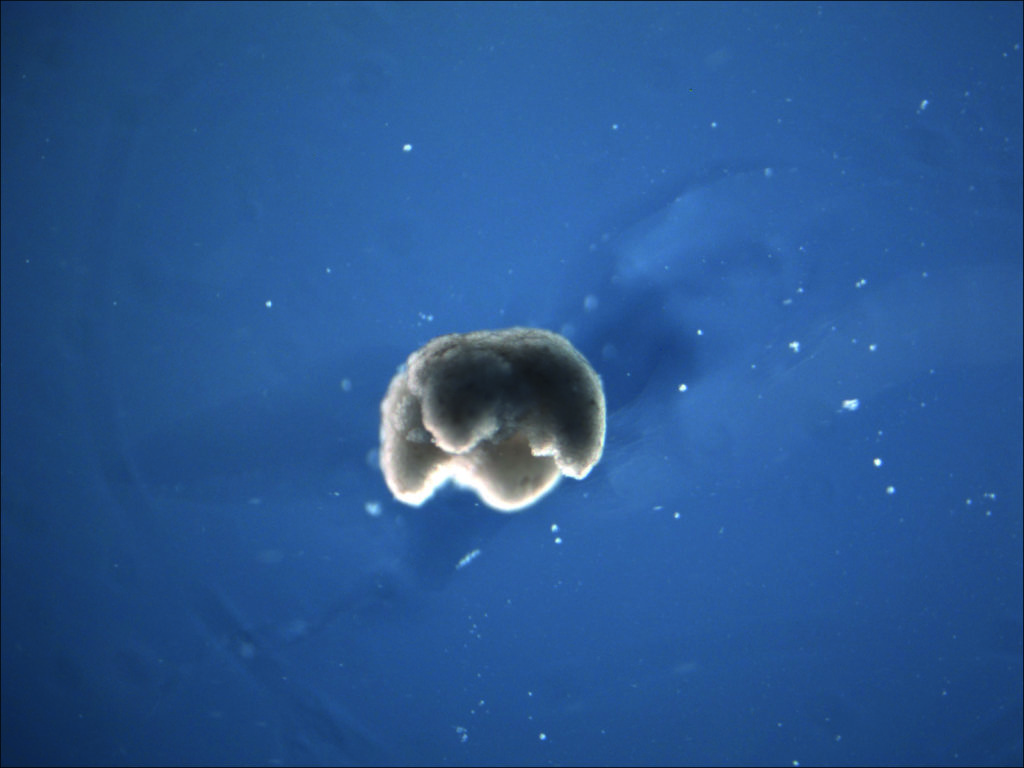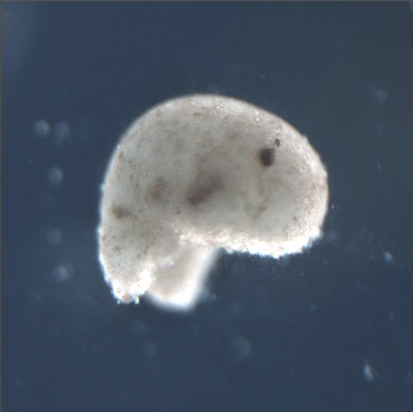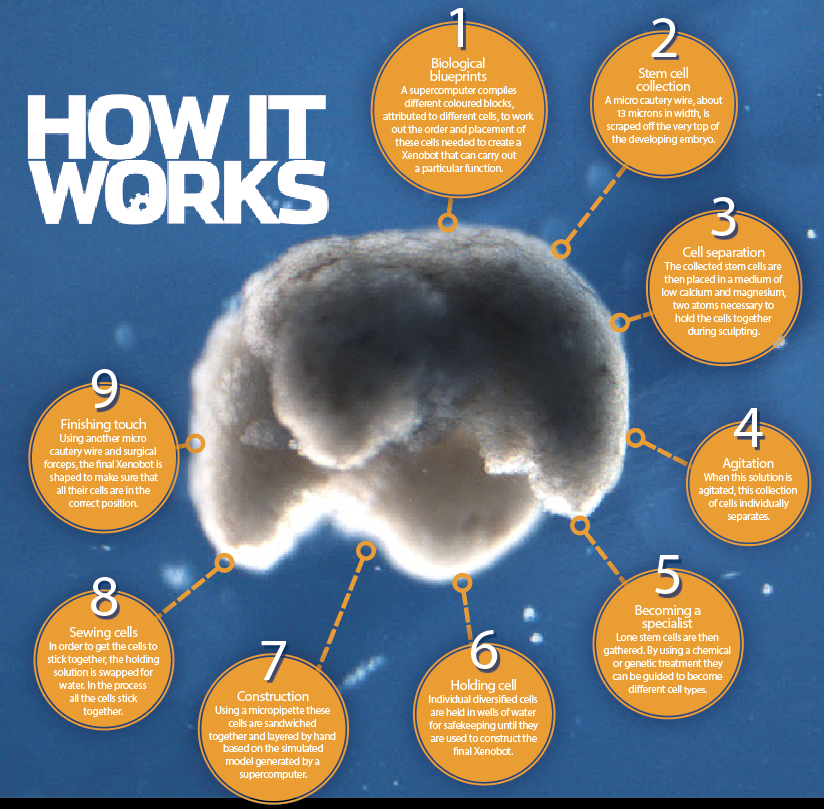Future Tech: How to make living machines
by Scott Dutfield · 14/11/2020
We’re on the cusp of programmable life – what could this mean for our future?

The concept of a living machine might make you imagine a walking, talking humanoid. However, a research team from Tufts University, Massachusetts, has created microscopic machines that more closely resemble a tardigrade – a tiny living organism – than the Terminator.
Called ‘Xenobots’, these spongy cloud-like living robots consist of biological stitchings of different types of cells collected from the surface of a developing frog embryo. One of the reasons that frog cells were used in this study was due to a natural energy source that allows them to survive around ten days in a water solution during the experiment.
The cells collected from the frog embryos were developing stem cells, which have the potential to diversify into many other types of cells. By scraping cells at particular locations on the embryos’ surface or exposing them to different chemical or genetic treatments in the laboratory, researchers were able to determine what types of cells they became. In the case of the Xenobots, passive skin and cardiac muscle cells were required.
In its infancy as a scientific concept these living machines were not designed to carry out complex or stimulus tasks, but rather to simply survive and move. It’s the cardiac muscle cells that give the Xenobots their ability to move through contraction and relaxation in the same way they facilitate
a heartbeat.
One of the challenges of making a living machine lies in knowing how to arrange each of the cellular building blocks. However, collaborating with the University of Vermont, researchers ran an evolutionary algorithm through a supercomputer, which then generates different configurations of these cells to produce the optimal Xenobot based on a desired set of attributes. For example, one of the most robust forms tested out by the research team was one commonly seen in nature: a leg at the front and at the back with contacting cardiac muscle cells in between. As the cardiac muscles contract, they pull the legs together and then release them. This makes the Xenobot move in a way reminiscent of how a caterpillar or worm might crawl along a branch.


How to make a living machine
From frog cell to functioning machine, it’s a delicate process to form the final Xenobot
Meet the man behind the machines
Co-author Dr Douglas Blackiston explains the unpredictability of Xenobots and how we can use them in the future

How do you control how the Xenobots move while in a solution?
That’s up to the Xenobot. I wish I could say I had a lot to do there, but you put them in the solution and then based on the physics of their movement system and the way they’ve been patterned, they do all of these things on their own. We have no understanding right now if it’s something under their control and something they’re doing intelligently or if that’s some by-product of their physiology. We’re looking at ways to control that. We have in biology the ability to control muscles by shining light, by playing with molecular genetics. You can imagine using a light source or laser and driving these around and activating their muscles in. That’s one of the things we’ve been looking at, but as far as we know this scattering behaviour is a spontaneous phenomenon. We were surprised to see it. But it matched a lot of what we saw in our simulated robot.
What inspired you to pursue this research and what are its future applications?
I was really interested in this idea of plasticity. How do you recombine and restructure part of an animal’s body and have it still have a functional behaviour, like metamorphosis, for example. You’re essentially taking a crawling animal and making it into a flying one. The Xenobots are very different, but it’s this idea of taking cells that are made for something like growing a frog and really pushing the limits of plasticity, putting these cells into novel configurations and building something new. But beyond my own interest, this technology is a great sandbox for other scientists to play in. There may be scientists who want to build different shapes for growing human organs, or playing with different tissues and layering them in different ways. The technology that we developed could really be applicable to a lot of different areas, even regenerative. If you lose a finger or an arm, you want to regrow the right amount of tissue in the right place and control how that unpacking happens, and that’s very complicated. However, Xenobots, where you can place the cells and grow and shape them, allow us to get into the nitty-gritty of how that process works, and how we get control over that process.
This article was originally published in How It Works issue 138
For more science and technology articles, pick up the latest copy of How It Works from all good retailers or from our website now. If you have a tablet or smartphone, you can also download the digital version onto your iOS or Android device. To make sure you never miss an issue of How It Works magazine, subscribe today!






